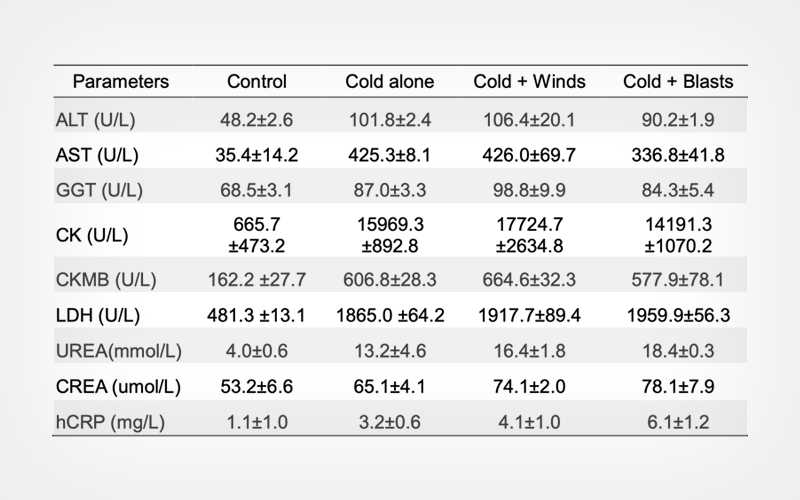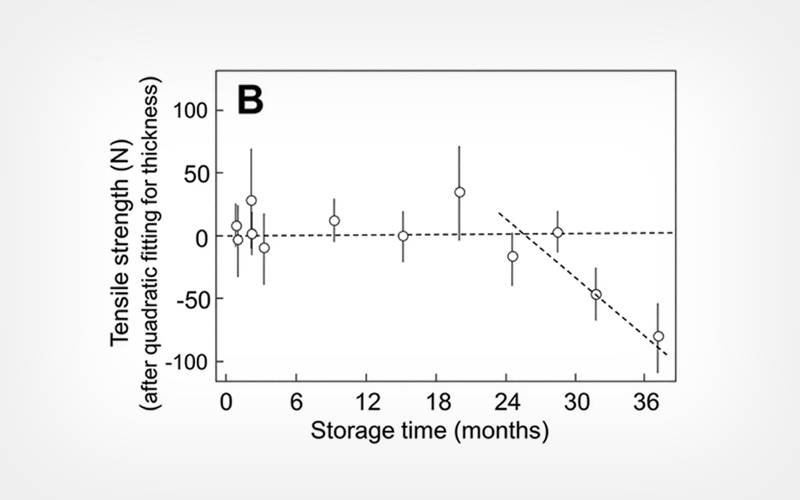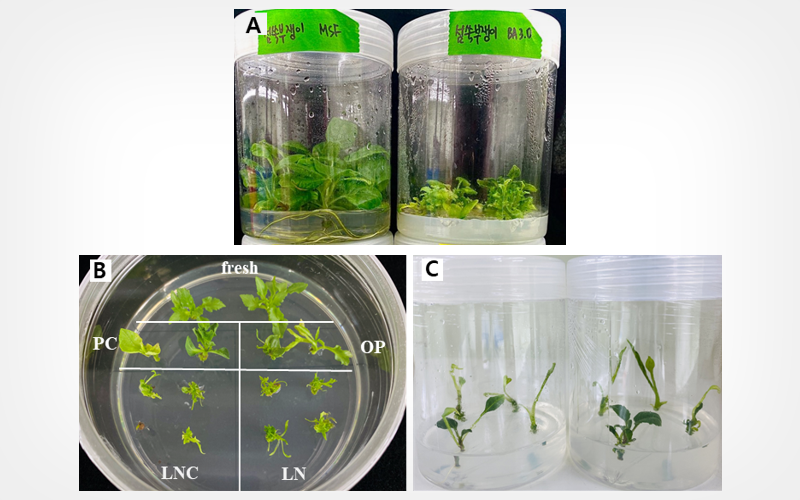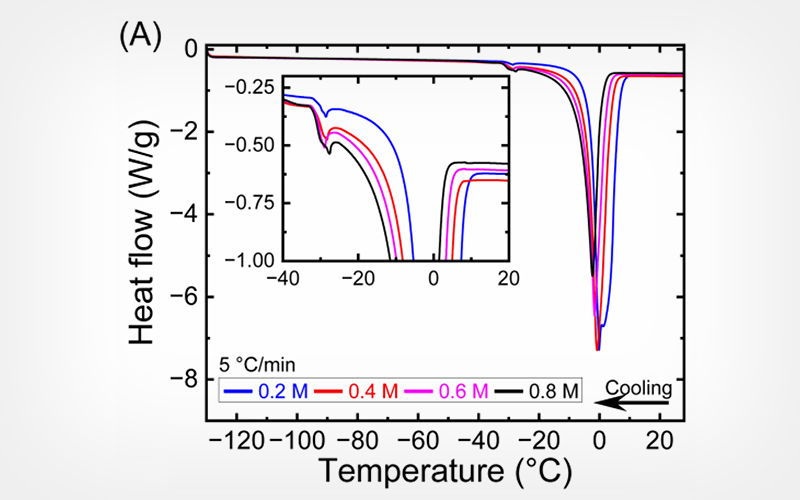CryoLetters Volume 47 - Issue 1
CryoLetters 47 (1), 1-15 (2026)
© CryoLetters, editor@cryoletters.org
doi.org/10.54680/fr26210110112
PERSPECTIVE: Indian citrus germplasm in the frozen state: conserving exceptional genetic diversity for posterity, utilization and food security
S.K. MALIK1*, Sangita BANSAL2, Prachi PANT1, Era V. MALHOTRA1,
Hugh W. PRITCHARD3,4* and G.P. SINGH5*
- Division of Germplasm Conservation, ICAR-National Bureau of Plant Genetic Resources, New Delhi, India.
- Division of Genomic Resources, ICAR-National Bureau of Plant Genetic Resources, New Delhi, India.
- Chinese Academy of Sciences, Kunming Institute of Botany, Kunming 650201, Yunnan, China.
- Royal Botanic Gardens, Kew, Wakehurst, West Sussex RH17 6TN, UK.
- ICAR-National Bureau of Plant Genetic Resources, New Delhi, India.
*Corresponding authors’ E-mail: skm1909@gmail.com and hwp@mail.kib.ac.cn
Abstract
India has a rich genetic diversity of citrus, both cultivated and wild types, particularly in the northeastern and northwestern regions. Managing genetic resources of this enormous diversity is a challenging task. Citrus species show non-orthodox seed storage behavior and, therefore, are not easily conserved using conventional -20°C storage methods. Cryopreservation is the only feasible long-term ex situ conservation strategy of a diverse genus like citrus. This strategy not only protects valuable genetic material against threats such as diseases, climate change, and habitat loss, but also facilitates future research and breeding efforts to develop resilient and high-yielding citrus varieties. Although germplasm collection and conservation of citrus began >100 years ago, the long-term ex situ conservation of citrus genetic resources accelerated from the 1990s with the establishment of the cryogenebank at ICAR-National Bureau of Plant Genetic Resources, New Delhi, India. During the last three decades, germplasm of citrus has been collected from various parts of the country and protocols to cryopreserve seeds, embryos, embryonic axes and pollen have been successfully developed. The base collection of citrus germplasm at the National Cryogenebank has cryopreserved embryos and embryonic axes through different techniques, namely desiccation-fast freezing, encapsulation-dehydration, vitrification, or encapsulation-vitrification. Basic studies on seed physiology and storage behavior of diverse citrus species have been conducted, resulting in the successful development of cryopreservation protocols. These advancements have facilitated the cryobanking of over 1,245 accessions from 39 species of Citrus and of the related genus Poncirus in the National Cryogenebank.
Keywords: cryobiotechnology; cryogenebank; cryopreservation; cryoprotocol; non-orthodox seeds; vitrification

CryoLetters 47 (1), 16-23 (2026)
© CryoLetters, editor@cryoletters.org
doi.org/10.54680/fr26210110312
Establishment and evaluation of a hypothermia model of Bama mini-pigs
Sitong Wang, Yu Zhou, Yuan Yuan, Hongxu Jin, Ying Liu and Ruihang Ma*
- Department of Emergency Medicine, General Hospital of Northern Theater Command, Shenyang 110016, Liaoning, People’s Republic of China.
*Corresponding author’s E-mail: 406620360@qq.com
Abstract
Background
The occurrence of cold injury persists in modern military operations. Frigid weather imposes extreme physiological stresses to animal and human life.
Objective
To develop a hypothermia model using Bama miniature pigs for biochemical and physiological study of cold injuries.
Materials and methods
Twelve Bama mini-pigs (20 to 25 kg) were allocated to four groups: control, cold exposure alone, cold exposure with strong wind, and cold exposure with intermittent blasts. Pigs were anesthetized using ketamine/sumianxin II (1 mg), supplemented with pentobarbital sodium as needed. Blood samples were collected during progressive hypothermia for the evaluation of biochemical, hematologic and coagulation profiles. Skin manifestations and hypothermia progression were recorded prior to euthanasia and histopathological organ analysis.
Results
Hypothermic pigs exhibited progressive decrease in body temperature, leg frostbite, ice formation around the mouth, and other injuries over a period of 8 days. Cold exposure significantly altered the body temperature, blood cell count (excluding platelets), blood biochemistry, coagulation function and thromboelastography of animals as compared to the control group (P < 0.05). Abnormal swelling of bladders with urinary retention and prominent pericardial effusion were observed upon autopsy examination. Pathological examination from HE-stained slides revealed edema, inflammation, hyperplasia and hemorrhage in vital organs. Cold exposure with strong wind resulted in the most rapid and severe hypothermia (27.27 ± 1.33°C).
Conclusion
This study evaluated the physiological responses of Bama mini-pigs under extreme cold stress and demonstrated that Bama mini-pig is a useful hypothermia model for investigation of cold injuries.
Keywords: domestic birds; wild birds; raptors; cryoprotectants; semen extenders

CryoLetters 47 (1), 24-28 (2026)
© CryoLetters, editor@cryoletters.org
doi.org/10.54680/fr26210110512
Effect of frozen storage time on decellularization, mechanical strength and stability of porcine acellular dermis
Zhao-yu Chen, Ying-ying Han and Wendell Q. Sun*
- Institute of Biothermal Science and Technology, School of Health Science and Engineering, University of Shanghai for Science and Technology, Yangpu, Shanghai 200093, China.
*Corresponding author’s E-mail: wendell.q.sun@gmail.com
Abstract
Background
The industrial scale frozen storage of porcine hides for the production of acellular dermal matrix is maintained typically below -20°C until processing.
Objective
The study was aimed to examine the influence of frozen storage time on decellularization of porcine dermis, as well as the mechanical strength and stability of the yielded acellular dermal matrix.
Materials and methods
Porcine hides were stored at freezers maintained between -20°C and -25°C up to 37 months. Hides were split and dermis tissues were decellularized to produce acellular dermal matrix. The residual DNA content, biomechanical strength and thermal stability of acellular dermal matrix were measured for evaluating the influence of the frozen storage time.
Results
The residual DNA content increased gradually as the frozen storage time prolonged (p = 0.008). Tensile strength decreased after 24-month frozen storage (p = 0.006). Breaking strain, burst strength, denaturation temperature and denaturation enthalpy showed no significant change after frozen storage between -20°C and -25°C up to 37 months.
Conclusion
Frozen storage time of porcine hides appears to affect the efficiency of decellularization and may also reduce the tensile strength after an extended period of frozen storage between -20°C and -25°C. Hides should be processed as soon as possible after collection and/or the maximal duration of frozen storage should be validated to meet the technical requirements for intended product application.
Keywords: acellular dermal matrix; cryopreservation; decellularization; porcine hide.

CryoLetters 47 (1), 29-38 (2026)
© CryoLetters, editor@cryoletters.org
doi.org/10.54680/fr26210110612
Cloning, expression, and enzymatic characterization of a cold-adapted
β-galactosidase from a marine source and its transglycosylation potential
ZHAO Ziqi 1,2, PAN Lin 2,3, WANG Zhe 2,3, ZHANG Yawen 2,3 and WANG Xiaohui 2,3*
- College of Medicine, Dalian University, Dalian, Liaoning, China.
- Liaoning Marine Microbial Engineering Technology Research Center, Dalian, Liaoning, China.
- School of Life Science and Technology, Dalian University, Dalian, Liaoning, China.
*Corresponding authors’ E-mail: wangxiaohui@dlu.edu.cn
Abstract
Background
Cold-adapted β-galactosidases are valuable for low-temperature applications in biotechnology, food and pharmaceutical industries.
Objective
The study aimed to isolate novel cold-active β-galactosidase-producing strains from marine sediments and develop more efficient and stable cold-active β-galactosidase.
Materials and methods
A cold-adapted stain (Bacillus sp. K3) was isolated from deep-sea sediments. The enzyme gene was cloned and expressed in Escherichia coli BL21 (DE3). The enzyme was purified and characterized for its biochemical properties and transglycosylation potential.
Results
The recombinant β-galactosidase exhibited optimal activity at 20°C and maintained stability from -20°C to 50°C, with peak efficiency at pH 6.0. Kinetic analysis confirmed high catalytic efficiency at low temperatures. Its activity was enhanced by Triton X-100, Mg2+, and Mn2+, while strongly inhibited by Hg2+, Cu2+, EDTA, and DTT. Notably, the enzyme achieved a 13.7% galacto-oligosaccharide (GOS) conversion at 20°C.
Conclusion
A cold-adapted stain (Bacillus sp. K3) was isolated from deep-sea sediments, and it produces a β-galactosidase that functions at low temperatures. The study highlights the potential of the K3 β-galactosidase for low-temperature applications in biotechnology, food, pharmaceutics and environmental industries.
Keywords: cold adaption; deep-sea sediments; β-galactosidase; transglycosylation.

CryoLetters 47 (1), 39-43 (2026)
© CryoLetters, editor@cryoletters.org
doi.org/10.54680/fr26210110212
A non-contact sensor for detecting ice seeding effects in cryopreservation
Weijie Li1,2, Jiaxing Feng1,2, Kashaf Ul Eman1,2, Xi Yang1,2, Maoyue Shi1,2, Xinyue Wang1,2 and Baolin Liu1,2*
- School of Health Science and Engineering, University of Shanghai for Science and Technology, Shanghai 200093, China.
- Shanghai Co-innovation Center for Energy Therapy of Tumors, Shanghai 200093, China.
*Corresponding author’s E-mail: blliuk@163.com
Abstract
Background
Ice seeding enhances extracellular ice formation, minimizes intracellular damage and improves cell viability. But the real-time evaluation of ice-seeding within cryovials is problematic, and it is often assumed that the solution will be sufficiently ice-seeded if an ice-seeding process is used.
Objective
To construct and evaluate a real-time sensor for monitoring the ice seeding process via the detection of the solution capacitance.
Materials and methods
The sensor used consisted of conductive plates and an insulating sleeve, which measured the capacitance in aqueous solutions. The capacitance was recorded over a frequency of 1 kHz to 5 MHz, and temperature was recorded simultaneously to monitor the freezing dynamics.
Results
The constructed sensor was able to detect significant changes in capacitance before and after freezing. The optimal monitoring frequency was 1 kHz, which registered the largest capacitance changes. Real-time monitoring confirmed the crystallization process, with the rapid increase in capacitance indicating the completion of ice formation.
Conclusion
The capacitance sensor permits the accurate real-time monitoring of ice seeding and can be used for improving the outcomes of cryopreservation and freeze-drying. The refining of the sensor and coupling with ultrasonic technology will maximize its efficiency and reliability.
Keywords: capacitance sensor; cryopreservation; ice-seeding

CryoLetters 47 (1), 44-51 (2026)
© CryoLetters, editor@cryoletters.org
doi.org/10.54680/fr26210110412
Cryopreservation of shoot-tips of Aloe fievetii, an endangered species from madagascar, by droplet-vitrification
Raquel Folgado
- The Huntington Library, Art Museum, and Botanical Gardens 1151 Oxford Rd. San Marino, CA 91108, USA
*Corresponding author’s E-mail: rfolgado@huntington.org
Abstract
Background
Aloe fievetii is endemic to Madagascar and is assessed as endangered by the IUCN Red List. Cryobiotechnology tools, such as micropropagation and cryopreservation, are valuable tools for propagating and preserving essential plants, including rare and endangered species.
Objective
This work aimed at developing a droplet-vitrification procedure designed explicitly for shoot tips from Aloe fievetii, that will allow the conservation of type plants.
Materials and methods
Shoot tips from 6-week-old tissue-cultured plants were excised and subjected to a droplet-vitrification method. Two cryopreservation trials, in conjunction with the PVS2 treatment duration test, assessed the effectiveness of sucrose preculture and of pretreatment of shoot tips and donor shoots, respectively.
Results
After rewarming, optimal results were achieved after 30 min of exposure to PVS2. The highest recovery of plants (83%) was observed 12 weeks after rewarming of shoot-tips dissected from sucrose-treated plants.
Conclusion
The treatment of donor plants with sucrose-enriched medium enhanced the regeneration of cryopreserved explants. This method represents the first reported protocol for cryopreserving shoot tips from an Aloe species.
Keywords: Aloe; conservation; cryobiotechnology; PVS2; sucrose.

CryoLetters 47 (1), 52-59 (2026)
© CryoLetters, editor@cryoletters.org
doi.org/10.54680/fr26210110612
Influence of polyvinyl alcohol on the non-equilibrium phase and state transition behaviors of trehalose solutions
Kaixuan Zhu1* and Kashan Memon2
- Suzhou Institute of Technology, Jiangsu University of Science & Technology, Suzhou, Jiangsu, China.
- Department of Electronic Engineering and Information Science, University of Science and Technology of China, Hefei, Anhui, China.
*Corresponding authors’ E-mail: 18114026634@163.com
Abstract
Background
Cryopreservation and freeze-drying are commonly-used techniques for the long-term preservation of liable biological materials. The understanding of the non-equilibrium phase transition behavior of cryoprotectant solutions is crucial for optimizing preservation protocols with the precise control of phase transition behaviors.
Objective
To investigated the effect of polyvinyl alcohol (PVA) on the phase transition dynamics of trehalose solutions, particularly the cooling rate effect on crystallization.
Materials and methods
Differential scanning calorimetry (DSC) was used to examine real-time crystallization behavior during cooling of trehalose-PVA solutions as temperature-dependent and time-resolved thermal transitions. Trehalose concentration varied from 0 to 0.8 M, and cooling rates from 1 to 20°C/min. The effect of PVA molecular weight on crystallization kinetics was also analyzed.
Results
The increasing of trehalose concentration accelerates and enhances crystallization. Higher cooling rates promote earlier crystallization and lead to sharper exothermic peaks. PVA molecular weight also alters the crystallization process, and crystallization is inhibited by large PVA molecules. The complex interaction between cooling rate and PVA molecular weight influences crystallization kinetics and amorphous stability.
Conclusion
These findings provide valuable insights into the stabilization mechanisms of cryoprotectant formulations and have important implications for improving cryopreservation and lyophilization protocols.
Keywords: cryoprotectant; crystallization kinetics; polyvinyl alcohol; trehalose.

CryoLetters 47 (1), 60-71 (2026)
© CryoLetters, editor@cryoletters.org
doi.org/10.54680/fr26210110812
From cultivated to wild: a systematic approach-assisted adaptation of standard cryopreservation protocol from Chrysanthemum germplasm collection to wild Asteraceae species
Hyoeun Lee1#, Elena Popova2#, Jyueon Lee1, Jian Lee1, Sang-Un Park3 and Haenghoon Kim1*
- Department of Agricultural Life Science, Sunchon National University, Suncheon 57922, Republic of Korea.
- K.A. Timiryazev Institute of Plant Physiology of Russian Academy of Sciences, Botanicheskaya 35, Moscow 127276, Russia.
- Department of Crop Science, Chungnam National University, Daejeon 34134, Republic of Korea.
*Corresponding author’s E-mail: cryohkim@scnu.ac.kr
#Contributed equally as first authors
Abstract
Background
The adaptation of standard protocols initially developed for crop collections to wild relatives and ancestors remains challenging due to multiple factors involved in the process. We hypothesized that a systematic approach utilizing preset step-wise precultures and alternative cryoprotectant solutions might help expand cryopreservation protocols from cultivated to wild genotypes of the relative species. Additionally, a three-step regrowth starting with an ammonium-free medium was proposed to benefit the regrowth of wild species after cryopreservation.
Objective
To determine whether a systematic approach could be used to expand the standard cryopreservation protocol developed for the national Chrysanthemum morifolium germplasm collection to wild relatives within the Asteraceae family, including wild species of Chrysanthemum, Aster, Cirsium, and Gerbera.
Materials and methods
The standard droplet-vitrification protocol adopted for C. morifolium collection banking was tested on shoot tips of in vitro grown plants of five wild Asteraceae species: Chrysanthemum coreanum, C. zawadskii var. lucidum, Aster pseudoglehnii, Cirsium setidens, and Gerbera jamesonii. The protocol included step-wise preculture with sucrose (10% for 31 h then 17.5% for 16 h), osmoprotection with C4-35% (17.5% w/v glycerol + 17.5% w/v sucrose) for 40 min, alternative vitrification solution A3-80% (33.3% glycerol + 13.3% dimethyl sulfoxide + 13.3% ethylene glycol + 20.1% sucrose) for 60 min at 0°C, rewarming and unloaded in 35% sucrose. Three-step regrowth consisted of 5 days on ammonium–free MS medium with 1.0 mg/L GA3 and 1.0 mg/L BA, 23 days on full MS medium with the same growth regulators, and 14 days without growth regulators. This protocol was modified by varying the preculture treatments, the composition of the vitrification solution, and the regrowth medium. Modifications in donor plant culture conditions were also tested.
Results
The standard protocol yielded the highest post-cryopreservation regeneration in C. coreanum (91%), C. zawadskii var. lucidum (76%), and A. pseudoglehnii (87%), but low regrowth (10-15%) in C. setidens and G. jamesonii. The latter could be improved to 41% and 25%, respectively, by modifying donor plant culture conditions. In all species, except for C. setidens, regrowth media critically affected regeneration.
Conclusion
The standard protocol developed for cultivated chrysanthemum varieties applied to wild Korean Chrysanthemum and Aster species but required optimization for Cirsium setidens and Gerbera jamesonii. Although the composition of the vitrification solution was important, the critical factors were the improvement of the donor plant state and the regrowth conditions.
Keywords: alternative vitrification solutions, donor plants, droplet-vitrification, shoot tip cryopreservation, wild flora conservation.







